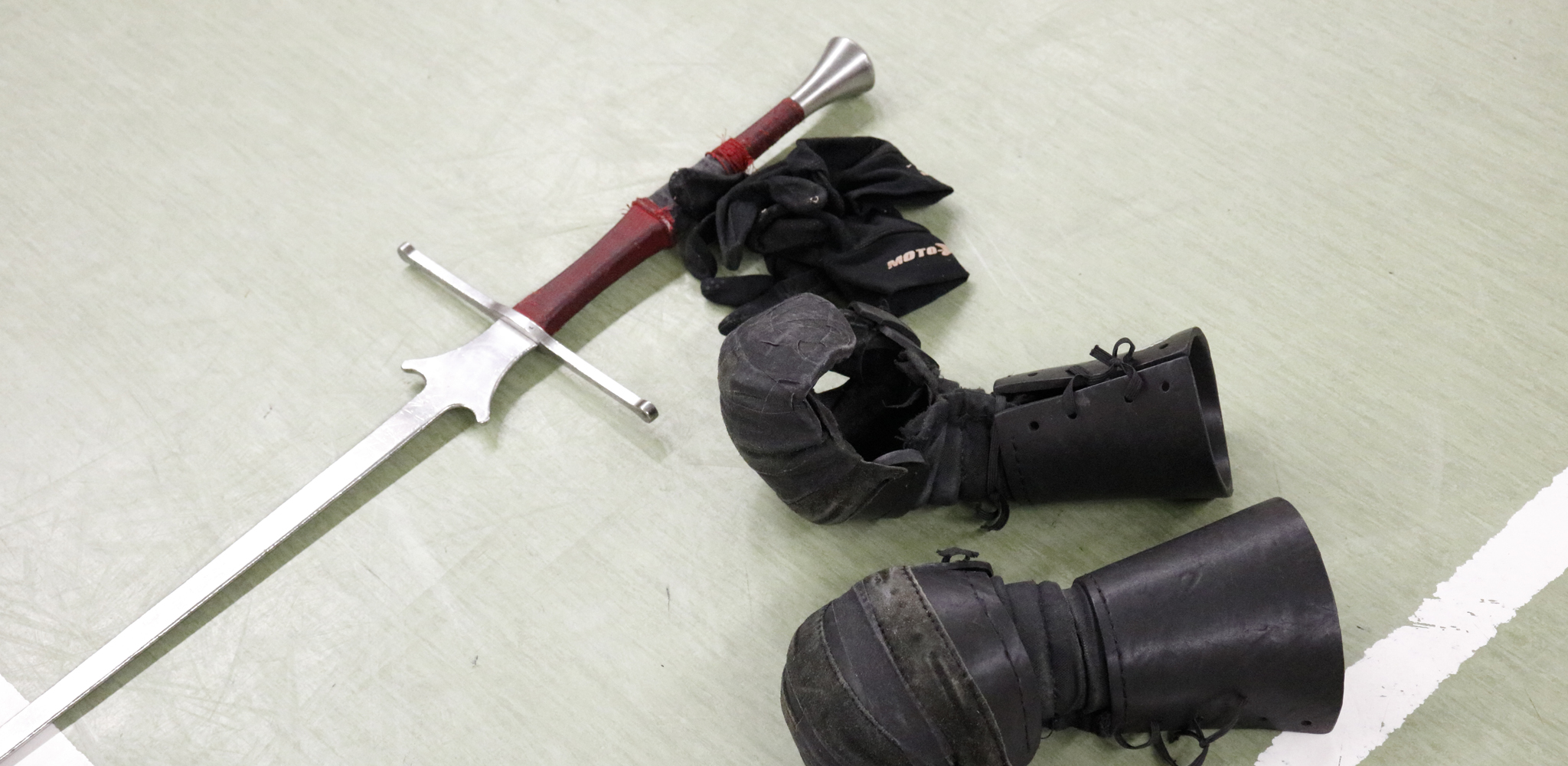The longsword gradually evolved from shorter swords and was in active service from the 14th century up to and including the 16th century. The longsword was a powerful weapon that seems to have played a central role in the fencing arts of the time, according to the manuals that are still with us today. The two schools of longsword fencing that have survived primarily in writing are the German school and the Italian school, and numerous historical swordsmen have written manual texts on both.
Our training focuses on the German school and we mainly work from Joachim Meyer’s manual from 1570. Meyer’s fencing focuses on participating in so-called fechtschule, sports fencing competitions of the time. To complement Meyer’s works that do not contain any thrusts, we also study other works.
The course
Basic course and advanced group
We run the basic course from 18:30 to 20:30 on Tuesdays, where all longsword fencers regardless of skill and equipment level are encouraged to participate. Due to a temporary lack of places, the advanced course is a part of the basic course and the last half hour until 21:00 is free sparring.
Intermediate group
The intermediate group trains from 19:00 to 21:00 on Wednesdays.
Equipment and knowledge requirements
The basic course
The basic course has no equipment or knowledge requirements other than training shoes for indoor use and training clothes. However, we encourage all beginners to get their own equipment for the level you want to train for as soon as possible.
The intermediate group
Talk to your coach if you want to train in the intermediate group. As we devote two thirds of the training to pair exercises at a fairly high speed, the following equipment is required as a minimum:
- Own longsword
- Gloves approved for longswords
- Fencing mask with neck protection
- Throat protection
The advanced group
Talk to your coach if you want to train in the advanced group. In order to best accommodate the training, full equipment is recommended, but to be able to participate in the exercises, the following equipment is required as a minimum:
- Own longsword
- Gloves approved for longswords
- Fencing mask with neck protection
- Throat protection
- Jockstrap (for those who need it during competition)
Read more about equipment here!
The vision for the groups
In order to develop our training, we have come to the conclusion that a division into three parts is necessary.
The goal of the basic course is for every fencer to have a basic understanding of fencing and basic techniques after the end of the first semester. It is more important to have a good knowledge of fencing itself than to know lots of techniques from different manuals.
The focus of the intermediate group is to be there for you who want to develop your fencing after you have attended our basic course for a while. With a great focus on the small details and the techniques you need most in everyday fencing, we work together to develop each other. We continue with the elements of the basic course and not infrequently we have the same theme in the training as the basic course the day before.
The advanced group’s focus is to develop the individual’s fencing through coached sparring, advanced exercises at high or low tempo and free sparring. Here, a lot of focus is placed on being able to apply techniques in sparring or against an uncooperative opponent.
Practical application
The longsword is used with both hands on the hilt, which makes it easy to maneuver around the entire body. Since we only have one weapon in our hands, this needs to be used for both attack and defense. Techniques with the longsword are therefore often based on attacking the opponent and defending oneself at the same time.
